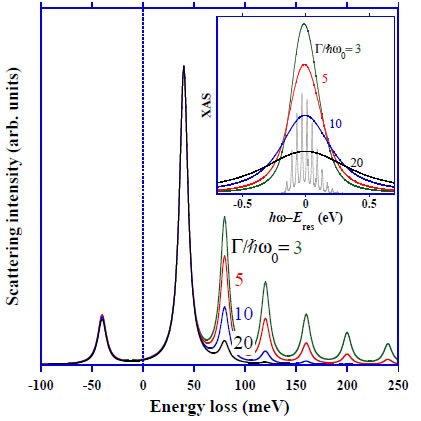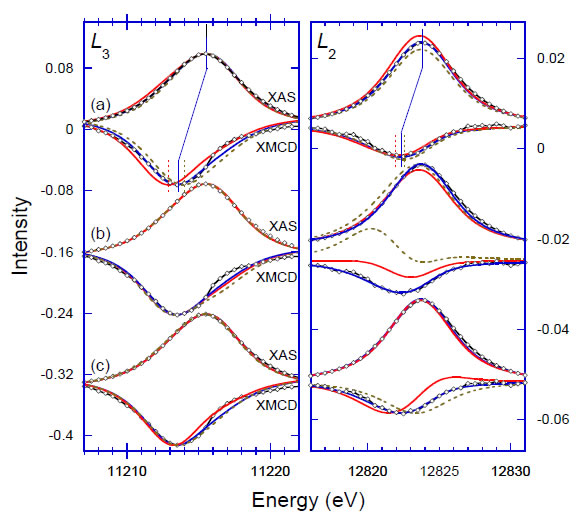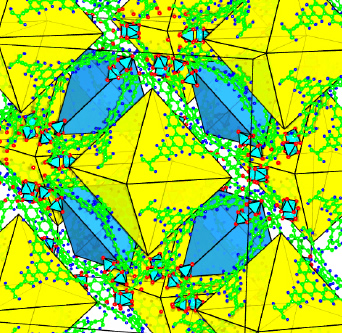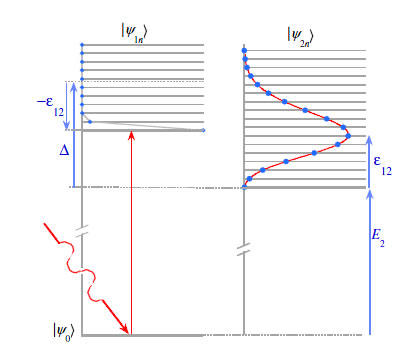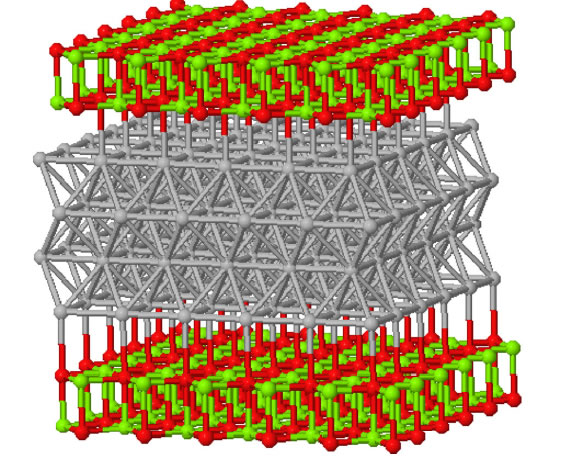| Highlights |
|
Observation of phonons with resonant inelastic x-ray scattering H. Yavas, M. van Veenendaal, J. van den Brink, L. J. P. Ament, A. Alatas, B. M. Leu, M.-O. Apostu, N. Wizent, G. Behr, W. Sturhahn, H. Sinn, and E. E. Alp J. Phys.: Cond. Mat. 22, 485601 (2010). Phonons, the quantum mechanical representation of lattice vibrations, and their coupling to the electronic degrees of freedom are important for understanding thermal and electric properties of materials. For the first time, phonons have been |
|
Orbital magnetism and spin-orbit effects in the electronic structure of BaIrO3 M. A. Laguna-Marco, D. Haskel, N. Souza-Neto, J. C. Lang, V. V. Krishnamurthy, S. Chikara, G. Cao, and Michel van Veenendaal Phys. Rev. Lett. 105, 216407 (2010). APS HIGHLIGHT The electronic structure and magnetism of Ir 5d5 states in non-metallic, weakly ferromagnetic BaIrO3 is probed with x-ray absorption techniques. Contrary to expectation the Ir 5d orbital moment is found to be ~1.5 times larger than the spin moment. This unusual, atomic-like nature of the 5d moment is driven by a strong spin-orbit interaction in heavy Ir ions, as confirmed by the nonstatistical large branching ratio at Ir L2/3 absorption edges. As a consequence, orbital interactions cannot be neglected when addressing the nature of magnetic ordering in BaIrO3. The local moment behavior persists even as the metallic/paramagnetic phase boundary is approached with Sr doping or applied pressure |
|
Milestone Demonstrates Impact of Scientific Software R. B. von Dreele and B. H. Toby APS HIGHLIGHT Crystallographic analysis of x-ray and neutron diffraction data is a widely used technique to provide three-dimensional (3-D) pictures of how atoms are arranged in materials, an essential first step toward understanding a material’s function. Computer software is an indispensable part of the crystallographic analysis process. A recent citation milestone demonstrates the great contribution to science that is made by a pair of such programs authored by two Argonne scientists. |
|
Fast intersystem crossing in transition-metal compounds M. van Veenendaal, J. Chang, and A. J. Fedro Phys. Rev. Lett. 104, 067401 (2010). APS HIGHLIGHT |
|
High brightness photocathodes through ultra-thin surface layers on metals K. Nemeth, K. C. Harkay, M. van Veenendaal, L. Spentzouris, M. White, K. Attenkofer, and G. Srajer Phys. Rev. Lett. 104, 046801 (2010). We report how ultrathin MgO films on Ag(001) surfaces can be used to control the emittance properties of photocathodes. In addition to substantially reducing the work function of the metal surface, the MgO layers also favorably influence the shape of the surface bands resulting in the generation of highbrightness electron beams. As the number of MgO surface layers varies from 0 to 3, the emitted electron |
|
Ultrafast cascading theory in intersystem crossings in transition-metal complexes J. Chang, A. J. Fedro, and M. van Veenendaal, Phys. Rev B. 82, 075124 (2010). This paper was selected for the September 2010 issue of the Virtual Journal of Ultrafast Science We investigate the cascade decay mechanism for ultrafast intersystem crossing mediated by the spin-orbit coupling in transition-metal complexes. A quantum-mechanical description of the cascading process that occurs after photoexcitation is presented. The conditions for ultrafast cascading are given, which relate the energy difference between the levels in the cascading process to the electron-phonon self energy. These limitations aid in the determination of the cascade path. For Fe2+ spin-crossover complexes, this leads to the conclusion that the ultrafast decay primarily occurs in the manifold of antibonding metal-to-ligand charge-transfer states. We also give an interpretation why some intermediate states are bypassed. |

